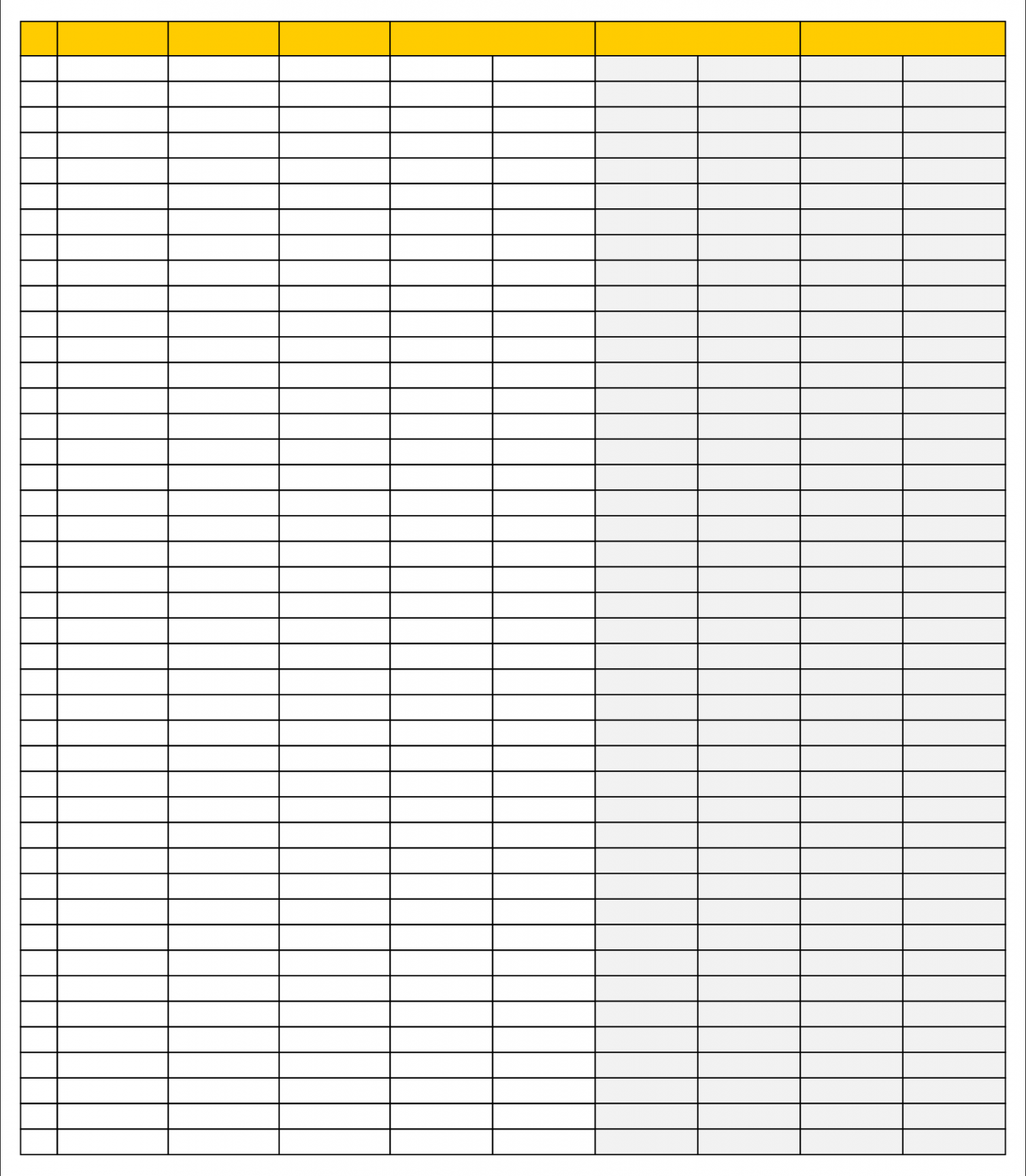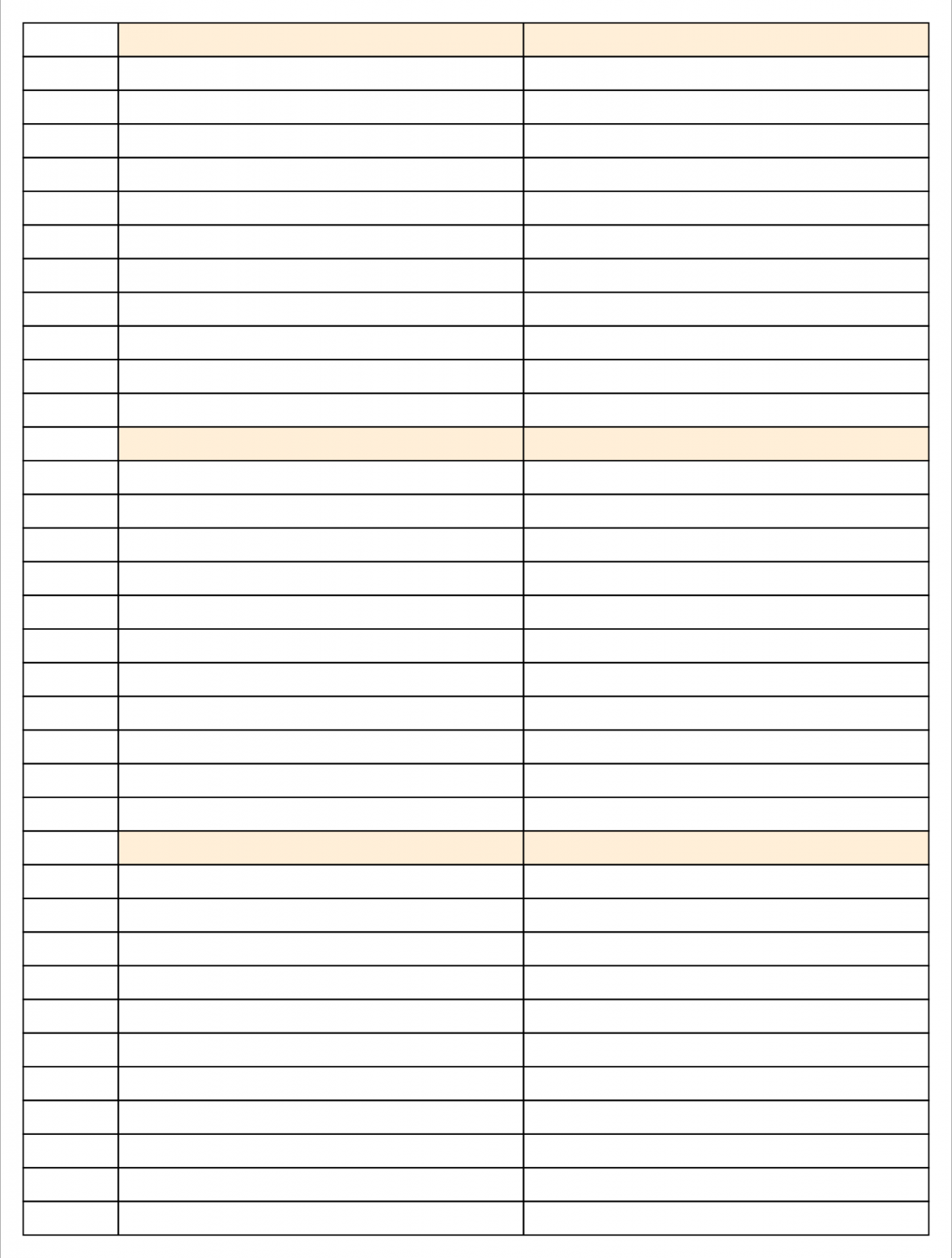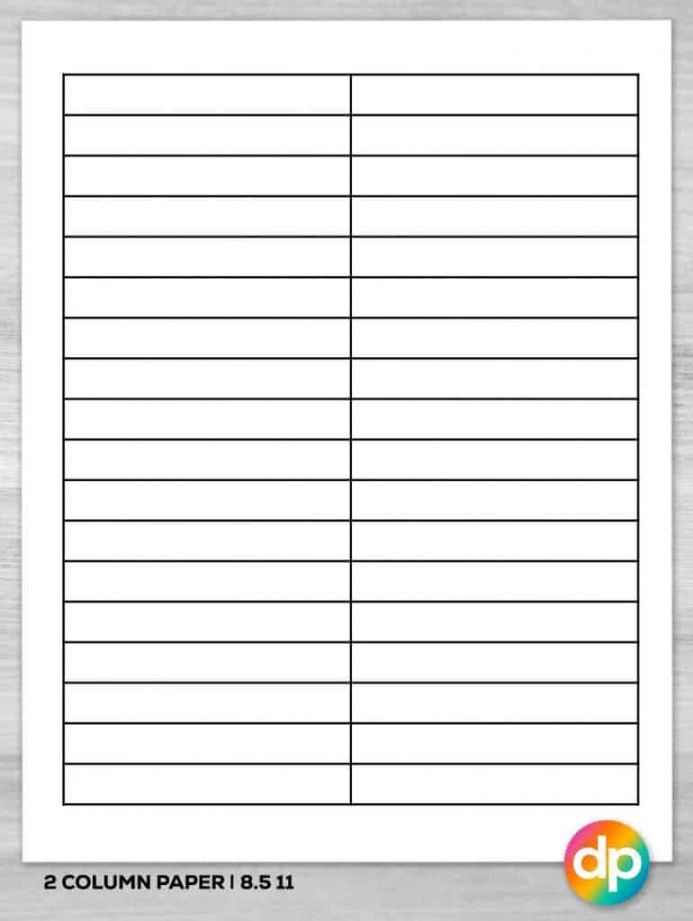What is Column Paper?
Column paper is a specialized type of paper that is commonly used for organizing and presenting data in a structured manner. It consists of multiple vertical columns, with each column representing a separate category or variable. This unique design allows for efficient data entry and analysis, making column paper an essential tool for various fields such as math, science, finance, and research.
The Benefits of Using Column Paper
1. Organization: One of the main advantages of using column paper is its ability to provide a clear and organized layout. The vertical columns allow for the separation of different data sets, making it easier to interpret and compare information.

2. Data Entry: Column paper simplifies the process of data entry by providing designated spaces for each variable. This ensures that data is recorded accurately and consistently, reducing the risk of errors or confusion.
3. Analysis: The structured layout of column paper facilitates data analysis. By aligning data in columns, patterns and trends become more apparent, enabling researchers and analysts to draw meaningful conclusions.

4. Flexibility: Column paper offers flexibility in terms of customization. It can be adapted to suit various data formats, such as numerical or categorical data, and can accommodate different scales or units of measurement.
5. Visual Appeal: Using column paper can enhance the visual appeal of data presentations and reports. The neat and organized format makes it easier for readers to navigate through the information and understand the key findings.
Applications of Column Paper

1. Scientific Research: Column paper is widely used in scientific research to record experimental data, observations, and measurements. Its structured layout allows researchers to easily analyze and compare data, supporting the formulation of hypotheses and the drawing of conclusions.
2. Financial Analysis: Column paper is an invaluable tool in financial analysis. It enables the organization and comparison of financial data, such as revenues, expenses, and investments, facilitating decision-making, budgeting, and forecasting processes.

3. Mathematics and Statistics: Column paper is extensively used in mathematics and statistics for various purposes, including graphing data, solving equations, and performing statistical calculations. The vertical columns provide a systematic framework for analyzing numerical information.
4. Inventory Management: Column paper is employed in inventory management to track and monitor stock levels, sales, and purchases. It helps businesses keep accurate records and make informed decisions about inventory control and replenishment.
5. Classroom Use: Column paper is commonly used in classrooms to teach students about data organization and analysis. It allows students to practice recording and analyzing data in a structured format, enhancing their data literacy and critical thinking skills.
Tips for Using Column Paper Effectively
1. Plan your layout: Before using column paper, consider the specific variables or categories you need to record. Plan the number of columns required and assign each column a clear heading to ensure accurate and organized data entry.
2. Use rulers or guidelines: To maintain consistency and alignment, use rulers or guidelines when filling out column paper. This will help ensure that data is entered accurately and that it is easy to interpret and analyze later on.
3. Avoid overcrowding: It is important not to overcrowd column paper to maintain legibility. If you have a large amount of data to record, consider using additional sheets or larger column paper formats to ensure clarity.
4. Label your data: Clearly label your data points or entries within each column. This will make it easier for others to understand and interpret the information, particularly if you are sharing or presenting your findings.
5. Regularly review and analyze: Make it a habit to regularly review and analyze the data recorded on column paper. Look for patterns, trends, or anomalies that may require further investigation or action.
Conclusion
Column paper is a versatile tool for organizing and presenting data in a structured manner. Its unique layout allows for efficient data entry, analysis, and presentation. Whether used in scientific research, financial analysis, or classroom settings, column paper offers numerous benefits and enhances data organization and interpretation. By following a few simple tips, users can maximize the effectiveness of column paper and leverage its potential in various fields.
Stock Up on More Free Printable Materials…
Copyright Notice:
The images featured on our site are found online, copyrights are held by their original creators. For removal of any image, kindly contact us.